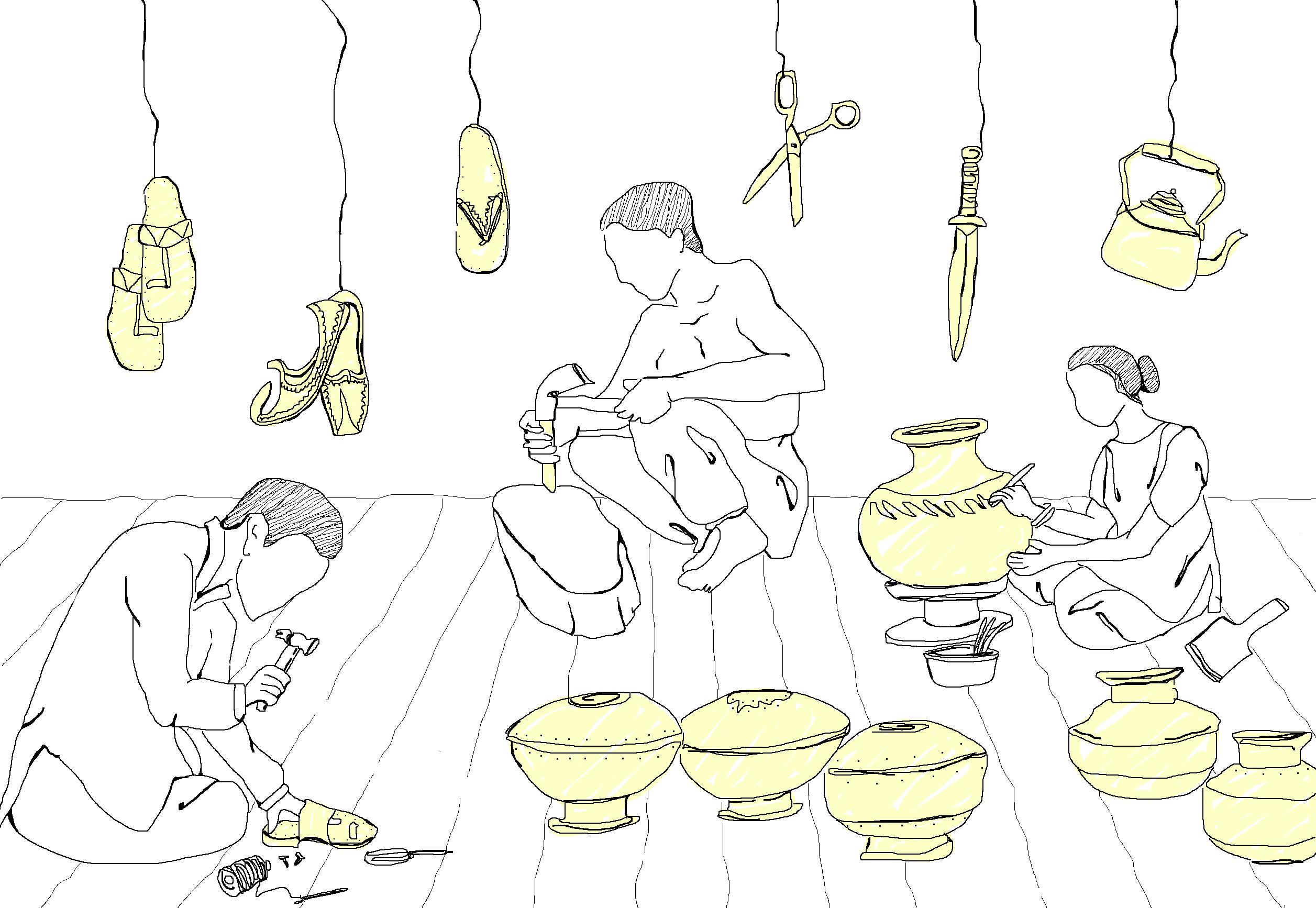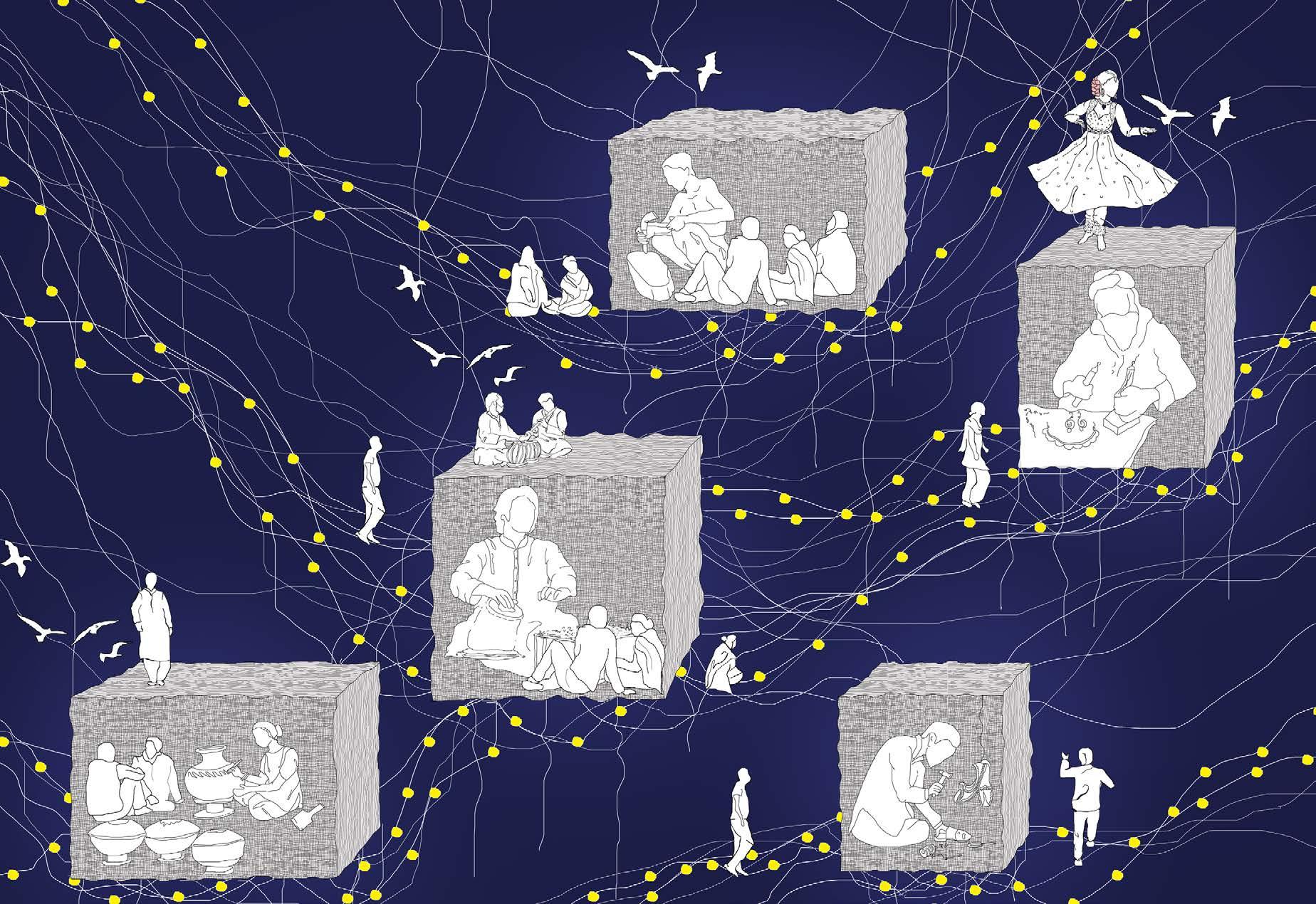
2 minute read
ARTISANS – THE LIVING HERITAGE OF LAHORE
The Mughal emperors were great patrons of arts and crafts, evolving the heart of their empire, the Walled City, into an artisan cluster. The city’s dense tangle of alleyways thrived with weavers, ironsmiths, masons, miniaturists, jewelers, and cobblers. This constellation of artisans was disrupted time and again as a result of the political instability. People poured in and out of the Walled City - however, the craftsmen’s continuity was grounded in their skills. Some of them continue their legacy to this day.
Amidst a cacophony of overpowering vehicular traffic of the Taxali Gate, a determined craftsman intricately carves a tabla (classical hand-drum) – an acquired skill he inherited through generations, which practiced instrument-making in the Indian subcontinent. Once upon a time, his forefathers crafted the melodious dholaks (two-headed hand-drum), to which the dancing girls of Hira Mandi swayed. The city still upholds the custom of hand-made instruments, varying from the traditional flutes, drums, and harmoniums to guitars and violins.
Advertisement

The same locality houses workshops of the shoemakers. The cobblers continue their tradition, crafting a variety of traditional footwear – khussas, khairis, and chappal, created with pure cow or sheep leather, ornamented with tilla (gold thread). The clanking and drilling of the blacksmiths of the Kasera Bazaar echo the creation of swords and armors for the ancient city’s soldiers and rulers.
Today, these metalworkers produce scissors for the tailors and cobblers of Lahore, harmoniously binding craft industries. The treasured jewelry-makers, battling with mass production, occupy small shops in the Suha Bazaar fashioning traditional trinkets in gold and silver. Meanwhile, in the jostling streets of Urdu Bazaar, a few artisans diligently practice the art of book-binding and book-making, indulging in old techniques from the golden age of the 12th-century Baghdad (Parvez 2017).



The women of Old Lahore are often solely steeped in household activities and are in dire need of programs like the Naqsh School of Arts, established in 2003. This institution upholds the motto ‘preserve for posterity’ and offers workshops for traditional drawing, painting, ceramics, and calligraphy. Institutions like these provide an opportunity for the women and men of less affluent localities to develop artistic skills and partake in the craft-tourism experience.












